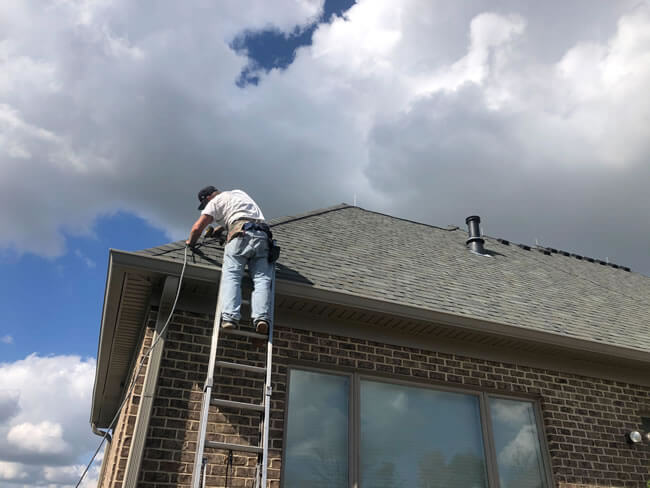Lightning rods are strategically placed on roofs to protect buildings from lightning strikes. Typically, a lightning rod system consists of a network of conductors, rods, and grounding components. Here’s a simplified explanation of the process:
- Rod Placement: Lightning rods are mounted on the highest points of a structure, often at corners or along the ridge line of the roof. This is to ensure that the rod is the tallest point, maximizing its ability to attract lightning.
- Conductor Network: Conductors, usually in the form of metal strips or cables, connect the lightning rods to each other and create a conductive path across the roof. These conductors are designed to safely channel the electrical energy from a lightning strike.
- Downleads: Downleads are vertical conductors that connect the horizontal network to the ground. They are often installed along the corners or edges of the building.
- Grounding: The downleads extend down the side of the building and connect to grounding electrodes, such as metal rods or plates buried in the ground. This helps dissipate the lightning’s energy harmlessly into the earth.
The idea is that the lightning rod provides a preferred path for the lightning to follow, guiding it safely to the ground and preventing damage to the structure. The entire system is designed to minimize the risk of fire, structural damage, or injury caused by a lightning strike.

